
Persona 3, released outside Japan as Shin Megami Tensei: Persona 3, is a 2006 role-playing video game developed by Atlus that is the fourth main installment in the Persona series, which is part of the larger Megami Tensei franchise. It was originally released for the PlayStation 2 in Japan in 2006 and in North America in 2007. It has received several enhanced re-releases and ports: Persona 3 FES, an extended version featuring a new playable epilogue and other changes, was released for the PlayStation 2 in Japan in 2007 and worldwide in 2008. An abridged PlayStation Portable version, Persona 3 Portable, was released in Japan in 2009, North America in 2010, and Europe in 2011, and ported to the Nintendo Switch, PlayStation 4, Windows, Xbox One, and Xbox Series X/S in 2023. Persona 3 Reload, a remake of the core game for PlayStation 4, PlayStation 5, Windows, Xbox One, and Xbox Series X/S, was released on February 2, 2024.
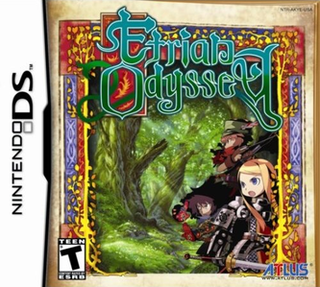
Etrian Odyssey is a 2007 3D dungeon crawler role-playing video game by Atlus for the Nintendo DS. It centers around first-person exploration of a mysterious dungeon known as the Yggdrasil Labyrinth using a player-created party of characters. The game received mixed to positive reviews from critics, who criticized its punishing difficulty as limiting its appeal, but also making its gameplay more rewarding.

Persona 2: Eternal Punishment is a 2000 role-playing video game by Atlus for the PlayStation. It is chronologically the third installment in the Persona series, a subseries of the Megami Tensei franchise. The game was later remade by Atlus for the PlayStation Portable. This version, released in Japan in 2012, did not receive an overseas release. In response to this, the PlayStation version was released on PlayStation Network in 2013.
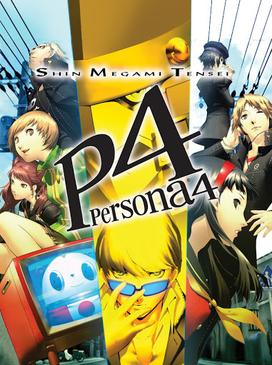
Persona 4, released outside Japan as Shin Megami Tensei: Persona 4, is a 2008 role-playing video game by Atlus. It is chronologically the fifth installment in the Persona series, itself a part of the larger Megami Tensei franchise, and was released for the PlayStation 2 in Japan in July 2008, North America in December 2008, and Europe in March 2009 as one of the final major exclusives for the system. It was re-released as a PlayStation 2 Classic for the PlayStation 3 in April 2014. Persona 4 takes place in a fictional Japanese countryside and is indirectly related to earlier Persona games. The player-named protagonist is a high-school student who moved into the countryside from the city for a year. During his year-long stay, he becomes involved in investigating mysterious murders with a group of friends while harnessing the power to summon physical manifestations of their psyches known as a Persona.
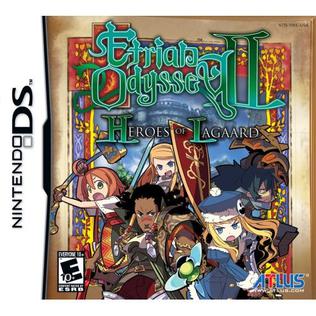
Etrian Odyssey II: Heroes of Lagaard is a 2008 dungeon crawler role-playing video game by Atlus for the Nintendo DS. Heroes of Lagaard is the sequel to Etrian Odyssey.

The plot of Atlus's PlayStation 2 role-playing game Persona 4 is centered on a group of high-school students dedicated to capturing the culprit responsible for the murders and kidnappings that happened in their small town of Inaba starting on April 11, 2011. The case is linked by the TV world, a dimension where the characters use alter-egos known as "Personas" to defeat the Shadows, beings that represent people's hidden thoughts that killed the first two victims. The protagonist is Yu Narukami, a high-school student who moved into the town from the city. He is met by Yosuke Hanamura, the son of the local department store manager; Chie Satonaka, an energetic girl with a strong interest in kung fu; Yukiko Amagi, a calm and refined girl whose family owns the local inn; Kanji Tatsumi, a first-year student whose punk reputation hides a softer side; Teddie, a mysterious figure from the TV world who exists in the form of a cartoonish bear costume; Rise Kujikawa, a popular teen idol who has taken a break from showbiz; and Naoto Shirogane, a well-known junior detective.
Persona, previously marketed as Shin Megami Tensei: Persona outside of Japan, is a video game franchise primarily developed and published by Atlus, and owned by Sega. Centered around a series of role-playing video games, Persona is a spin-off from Atlus' Megami Tensei franchise. The first entry in the series, Revelations: Persona, was released in 1996 for the PlayStation. The series has seen several more games since, with the most recent main entry being 2024's Persona 3 Reload.

Persona 5 is a 2016 role-playing video game developed by P-Studio and published by Atlus. The game is the sixth installment in the Persona series, itself a part of the larger Megami Tensei franchise. It was released for PlayStation 3 and PlayStation 4 in Japan in September 2016 and worldwide in April 2017. It was published by Atlus in Japan and North America, and by Deep Silver in PAL territories. An enhanced version featuring new content, Persona 5 Royal, was released for PlayStation 4 in Japan in October 2019 and worldwide in March 2020. It was published by Atlus in Japan and worldwide by its parent company Sega. Persona 5 Royal was later released for Nintendo Switch, PlayStation 5, Windows, Xbox One, and Xbox Series X/S in October 2022.
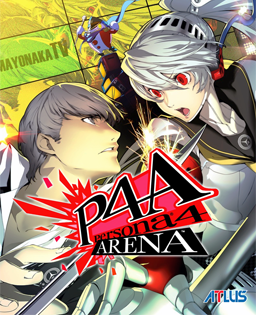
Persona 4 Arena is a fighting video game co-developed by P-Studio and Arc System Works and published by Atlus for arcades, PlayStation 3, and Xbox 360; the game is a spin-off from the Persona series, itself part of the larger Megami Tensei franchise. The game was published by Atlus in Japan and North America in 2012, and by Zen United in Europe in 2013. Gameplay follows standard fighting game conventions, with matches between two characters with individual movesets, and special expendable abilities. The storyline is told through visual novel segments.
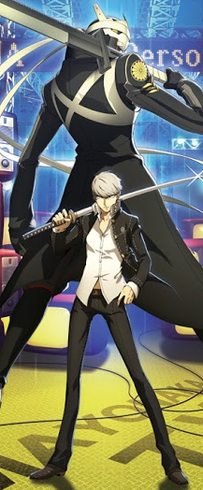
Yu Narukami is a character featured in the Persona series developed by Atlus, debuting as the protagonist of the 2008 role-playing video game Persona 4. In the game, Yu is a silent protagonist whose thoughts and actions are decided by the player. He is portrayed as a high school student who moves to the countryside region Inaba away from his city home, to live with his uncle Ryotaro Dojima and cousin Nanako while his parents are busy working. Shortly after arriving in Inaba, Yu starts investigating a murder case involving victims killed in the mysterious TV World, where he awakens his "Persona" — the physical manifestation of his subconscious spirit — in order to confront and defeat the "Shadows", the creatures who murdered the first victims. Yu has also appeared in other works related to Persona 4, including an anime adaptation, Persona 4: The Animation, a manga version, and several spin-off games. For these works, Yu received his own characterization and development in the stories.
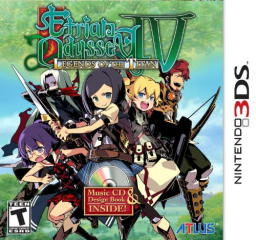
Etrian Odyssey IV: Legends of the Titan is a dungeon crawler role playing video game developed and published by Atlus for the Nintendo 3DS. It is the sequel to Etrian Odyssey III: The Drowned City and the first in the Etrian Odyssey series to be released on the Nintendo 3DS.

Etrian Odyssey Untold: The Millennium Girl is a 2013 role-playing video game for the Nintendo 3DS by Atlus. It is part of the Etrian Odyssey series, and is both a "reimagining" and a remake of the first entry. It was released by Atlus in 2013 for Japan on June 27 and in North America on October 1 and released by NIS America in Europe on May 2, 2014. It was available via both Nintendo eShop and retail at release.

Kanji Tatsumi is a fictional character introduced in the 2008 PlayStation 2 video game Persona 4 by Atlus. In the game Kanji is a high school student who becomes famous in television after fighting delinquents in the streets. Kanji becomes a victim of a series of kidnappings where the person is thrown to a dimension known as the TV World and the main cast of characters goes to save him from his alternate self, his Shadow. After Kanji is saved from the experience with the Shadow being turned into a power known as Persona, he joins the Investigation Team, befriending them in the process. He has also appeared in other works such as the fighting game Persona 4 Arena and the crossover Persona Q: Shadow of the Labyrinth. He is voiced by Tomokazu Seki in Japanese, and Troy Baker in English in Persona 4, Persona 4 Golden, Persona 4: Arena, and the first twelve episodes of Persona 4: The Animation; his English voice actor for the remainder of Persona 4: The Animation, as well as all subsequent games, is Matthew Mercer.

Persona 4 Arena Ultimax is a fighting video game co-developed by P-Studio and Arc System Works and published by Atlus. It was released for arcades in 2013, and for PlayStation 3 and Xbox 360 in 2014 by Atlus in Japan and North America and by Sega in PAL territories. Versions for Nintendo Switch, PlayStation 4, and Windows were released by Sega in March 2022. A direct sequel to Persona 4 Arena, the game is a spin-off from the Persona series, itself part of the larger Megami Tensei franchise. Gameplay follows standard fighting game conventions, with matches between two characters with individual movesets, and special expendable abilities. The storyline is told through visual novel segments.

Etrian Mystery Dungeon is a role-playing video game for the Nintendo 3DS. It was developed by Spike Chunsoft and Atlus, and published by Atlus in Japan on March 5, 2015 and Atlus USA in North America on April 7. It was published by NIS America in Europe on September 11. The game is a crossover between Atlus' Etrian Odyssey series and Spike Chunsoft's Mystery Dungeon series. A sequel, Etrian Mystery Dungeon 2, was released in Japan on August 31, 2017.

Etrian Odyssey is a dungeon crawler role-playing video game series. It is primarily developed and published by Atlus and currently owned by Sega. By 2016, the series had sold a combined total of 1.5 million copies worldwide.
Shigenori Soejima is a Japanese video game artist, best known for his work in the Persona series of role-playing video games by Atlus. Inspired in his work as an artist from an early age, he initially worked in minor roles on several games after joining Atlus. His first major work as an artist was on the strategy role-playing game Stella Deus: The Gate of Eternity (2004). From Persona 3 (2006) onwards, he took over as the character designer from his mentor Kazuma Kaneko.

Etrian Odyssey 2 Untold: The Fafnir Knight is a role-playing video game developed and published by Atlus for the Nintendo 3DS. It is part of the Etrian Odyssey series, and is a remake of Etrian Odyssey II: Heroes of Lagaard. It was released in Japan in November 2014, in North America in August 2015, and in the PAL region in February 2016.

Persona Q2: New Cinema Labyrinth is a 2018 dungeon crawler role-playing video game by Atlus for the Nintendo 3DS. It is a spin-off of the Persona series, itself part of the larger Megami Tensei franchise, and a sequel to Persona Q: Shadow of the Labyrinth featuring the cast from Persona 3, Persona 4, and Persona 5. It was released in Japan in November 2018 and worldwide in June 2019.
Goro Akechi, who uses the code name Crow, is a fictional character in the Persona series, first appearing in Persona 5. A high school detective nicknamed "The Second Coming of the Detective Prince", Akechi opposes the Phantom Thieves' actions and becomes both a rival and foil to Joker, the group's leader. For Persona 5 Royal, his characterization was further explored in order to appeal more to players. Besides printed and animated versions of the series, he has also been featured in the spin-offs Persona 5: Dancing in Starlight and Persona Q2: New Cinema Labyrinth.



















